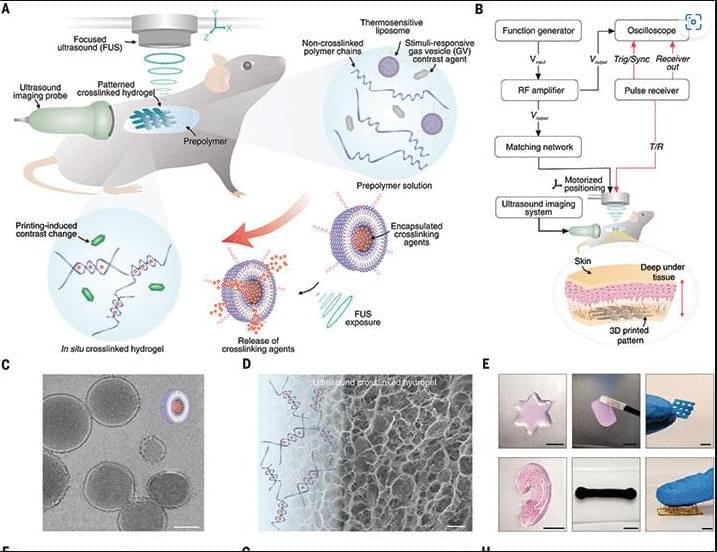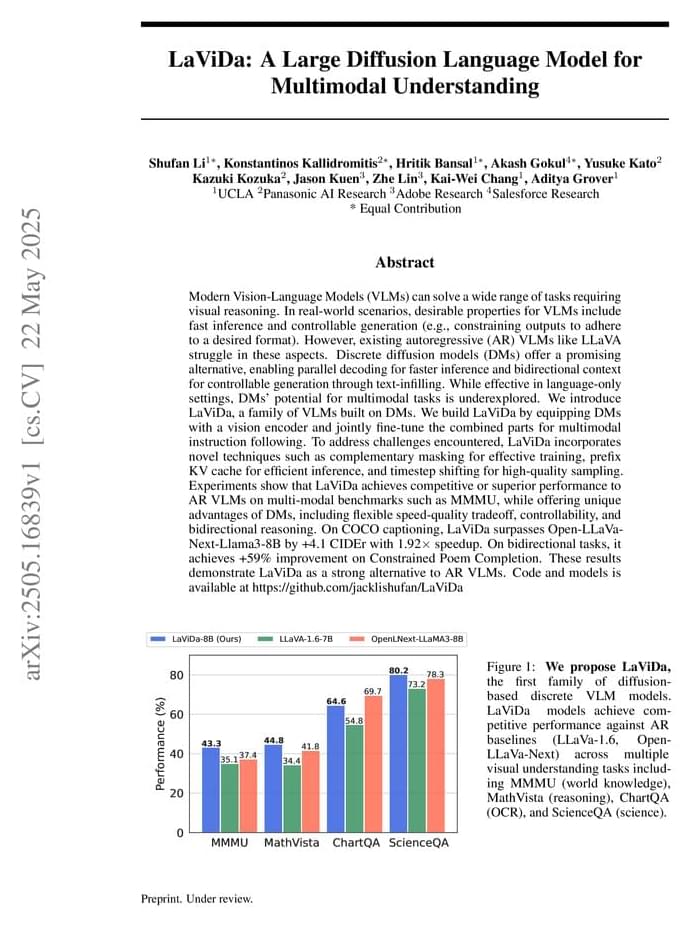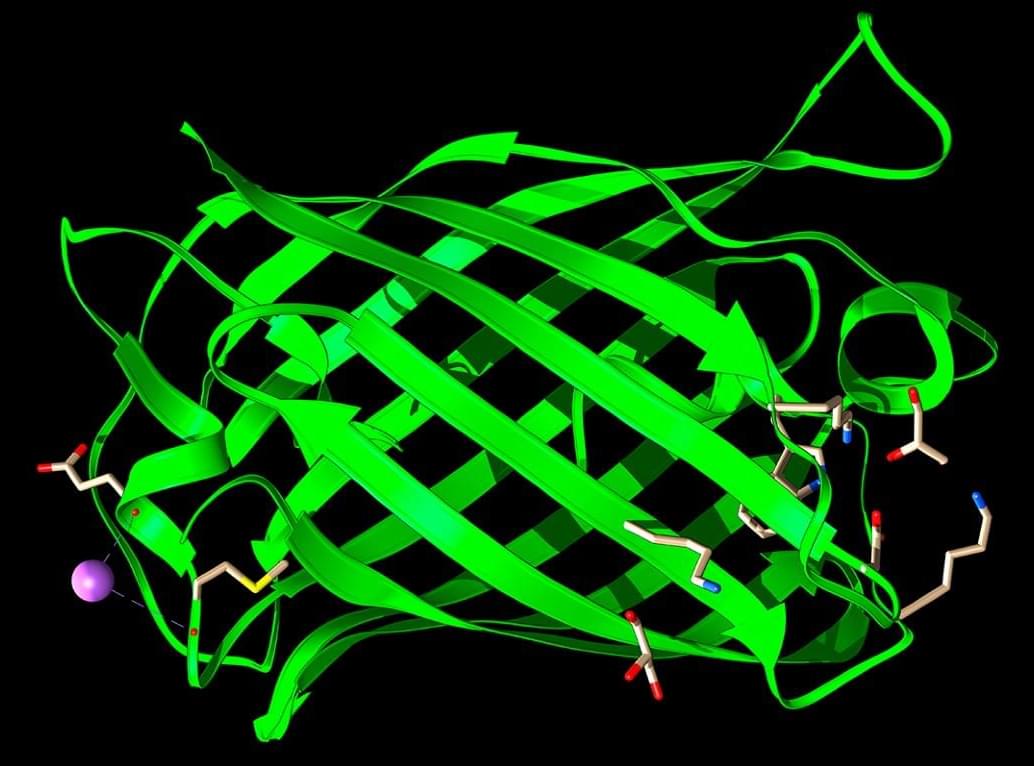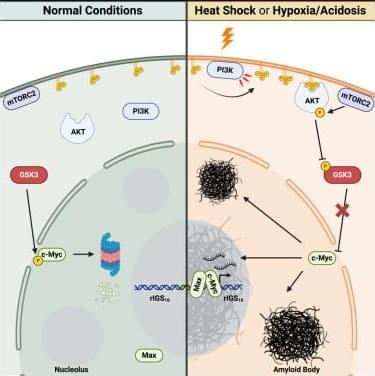Three-dimensional printing offers promise for patient-specific implants and therapies but is often limited by the need for invasive surgical procedures. To address this, we developed an imaging-guided deep tissue in vivo sound printing (DISP) platform…
View recent discussion. Abstract: Modern Vision-Language Models (VLMs) can solve a wide range of tasks requiring visual reasoning. In real-world scenarios, desirable properties for VLMs include fast inference and controllable generation (e.g., constraining outputs to adhere to a desired format). However, existing autoregressive (AR) VLMs like LLaVA struggle in these aspects. Discrete diffusion models (DMs) offer a promising alternative, enabling parallel decoding for faster inference and bidirectional context for controllable generation through text-infilling. While effective in language-only settings, DMs’ potential for multimodal tasks is underexplored. We introduce LaViDa, a family of VLMs built on DMs. We build LaViDa by equipping DMs with a vision encoder and jointly fine-tune the combined parts for multimodal instruction following.
The alarming behavior prompted Anthropic to deploy a safety feature created to avoid “catastrophic misuse.”
National Institutes of Health (NIH) scientists have developed a new surgical technique for implanting multiple tissue grafts in the eye’s retina.
The findings in animals may help advance treatment options for dry age-related macular degeneration (AMD), which is a leading cause of vision loss among older Americans.
Microscopy on tissue swollen to 16 times its normal size can help unravel neural structures
We’re announcing the world’s first scalable, error-corrected, end-to-end computational chemistry workflow. With this, we are entering the future of computational chemistry.
Quantum computers are uniquely equipped to perform the complex computations that describe chemical reactions – computations that are so complex they are impossible even with the world’s most powerful supercomputers.
However, realizing this potential is a herculean task: one must first build a large-scale, universal, fully fault-tolerant quantum computer – something nobody in our industry has done yet. We are the farthest along that path, as our roadmap, and our robust body of research, proves. At the moment, we have the world’s most powerful quantum processors, and are moving quickly towards universal fault tolerance. Our commitment to building the best quantum computers is proven again and again in our world-leading results.
The significance of this experiment extends beyond telecommunications, computing, and medicine. Metamaterials like the ones used in this research could have broader applications in industries such as energy, transportation, aerospace, and defense.
For instance, controlling light at such a fine level might enable more efficient energy systems or advanced sensor technologies for aircraft and vehicles. Even black hole physics could be explored through these new quantum experiments, adding to the wide-ranging impact of this research.
As technology advances, the role of metamaterials and quantum physics will become increasingly critical. The ability to manipulate light in space and time holds the promise of reshaping how we interact with the world, offering faster, more efficient, and more precise tools across industries.
A team of 19 researchers published guidelines for the responsible use of machine learning in science. They say it could avert a crisis that’s smoldering in every field.
A new crop of artificial-intelligence models allows users to create, manipulate and learn about biology using ordinary language.
Lacroix et al. demonstrate that heat-induced activation of the PI3K/AKT signaling cascade drives the formation of functional amyloid aggregates that protect cells from harsh environmental conditions. Here, activation of PI3K and AKT represses GSK3-mediated degradation of c-Myc, leading to upregulation of nucleating noncoding RNAs that mediate this physiological amyloidogenic event.









